The Delaware chicken is a dual-purpose chicken breed known for its docile temperament, good egg-laying abilities, and table bird. They are also desired for their hardiness in cold climates.
In this article, we’ll go over how this bird does with egg production, free-range flocks, and if they’re a good choice for urban farms. We’ll examine the Delaware chicken and whether it’s a good bird for a homestead or small farm.
Also covered is what size hen house you’ll need for a bird this size, including their nesting boxes and run size.
Read on to find out all there is to know about the Delaware chicken breed.
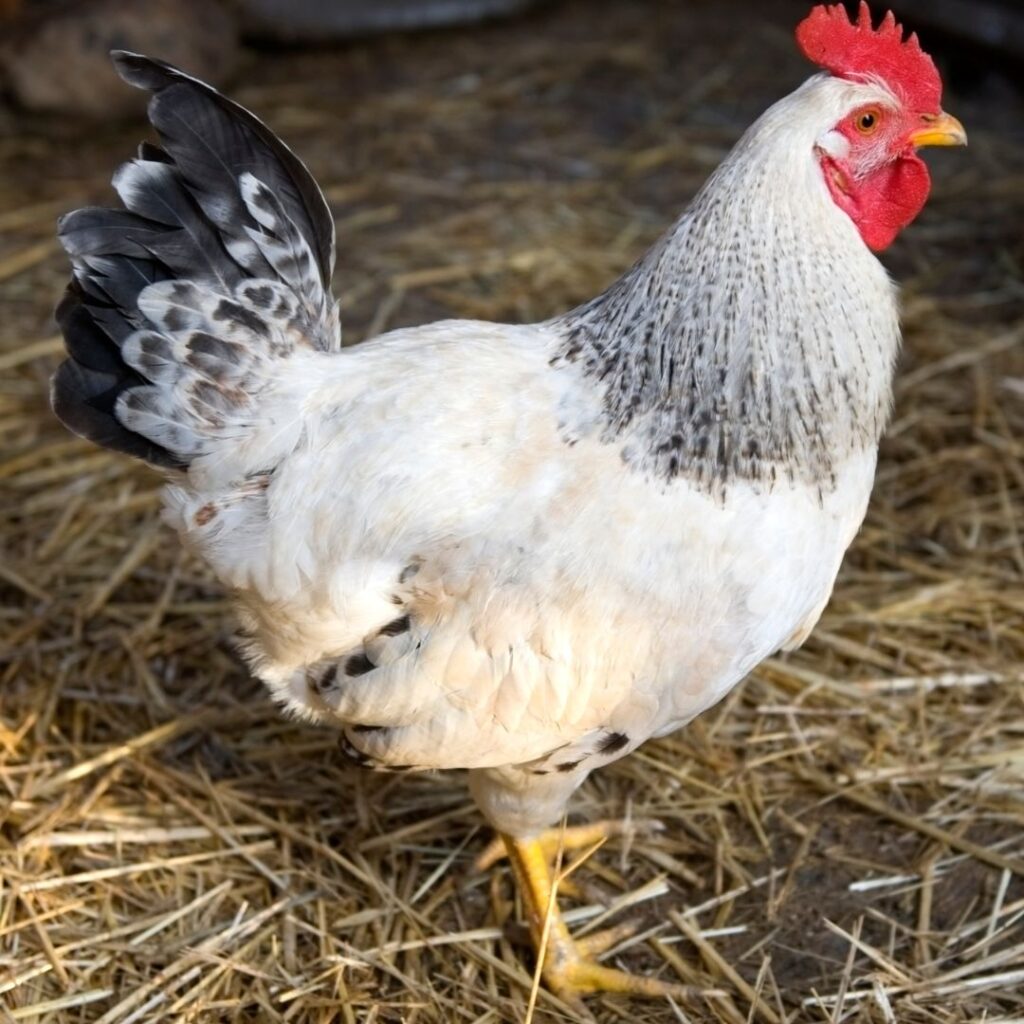
History Of The Delaware Chickens
Originally called the Indian River chicken, the Delaware chicken is an American breed developed by George Ellis at his farm in Indian River, Delaware, in 1940, giving it its name.
He was crossing Rocks and Reds and noted occasional white chick would hatch. These white chicks were considered “off-color” or “sports.”
However, these white chicks grew quickly and became larger than their counterparts.
After years of breeding the white offspring, they eventually became consistent in color and pattern – becoming a standard breed.
He continued with this selective breeding for over eight years. The result was a strong, fast-growing dual-purpose bird with good egg and meat production qualities.
The purpose of developing this breed was to create an all-around utility bird that could be used for both egg and meat production. It was also intended to improve existing breeds by producing birds better suited to cold climates, more docile, and easier to handle than other chickens.
The efforts of George Ellis were successful, and the American Poultry Association standard (APA) accepted the Delaware breed in 1952.
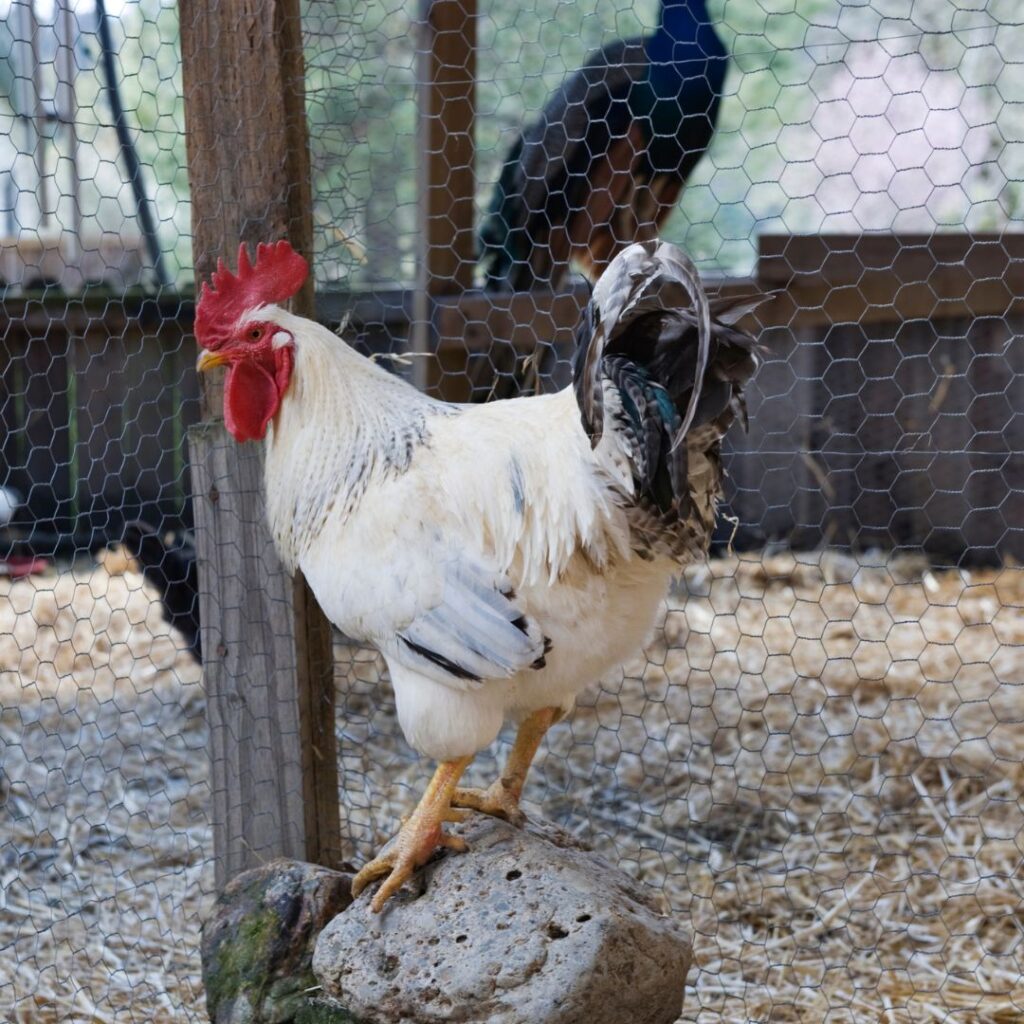
Are Delaware Chickens Rare?
Shortly after the introduction of the Indian Rivers, aka Delwares, the U.S. Poultry Industry started to grow, and breeds like the cornish rock cross and cornish cross were developed and introduced as the broiler bird of choice. Read more about the Cornish Heritage Breed here.
Very few Delaware flocks existed by the end of the 20th century, but they have come back in recent years.
This nearly erased the Delaware breed from the chicken world. At one time, this breed was considered endangered. Today they are categorized as a heritage breed with the ‘watch’ status by The American Poultry Association and the American Livestock Conservancy, two highly respected organizations in the poultry world.

Delaware Chicken Appearance; Delaware Hen VS. Delaware Rooster
The Delaware breed is a medium-sized, primarily white bird with males typically weighing around 8.5 lbs and females weighing about 6.5 lbs.
They have red ear lobes, single red combs with 5 points, and red wattles, with males having larger combs than females.
The beaks are a reddish horn color, and the eyes of the Delawares are reddish bay. This breed has yellow skin, clean yellow legs, and feet with four toes.
They have a broad, deep body that helps them be a cold, hardy breed. This broad body also makes it easy to see why this was once a very desired breed in the broiler industry. While the roosters are noticeably more prominent, the hens also have the same deep body structure.
Feathering is the same in the rooster and hen except for the tail feathers. This chicken presents as a primarily white bird. The bits of black barring further enhance all the white feathering.
All White feathers with irregular black barring except on the neck, back/saddle where feathers are all white.
Tail feathers on the male are black and white barred, with black being the predominant color.
Female tail feathers; Black feathers with white edging.
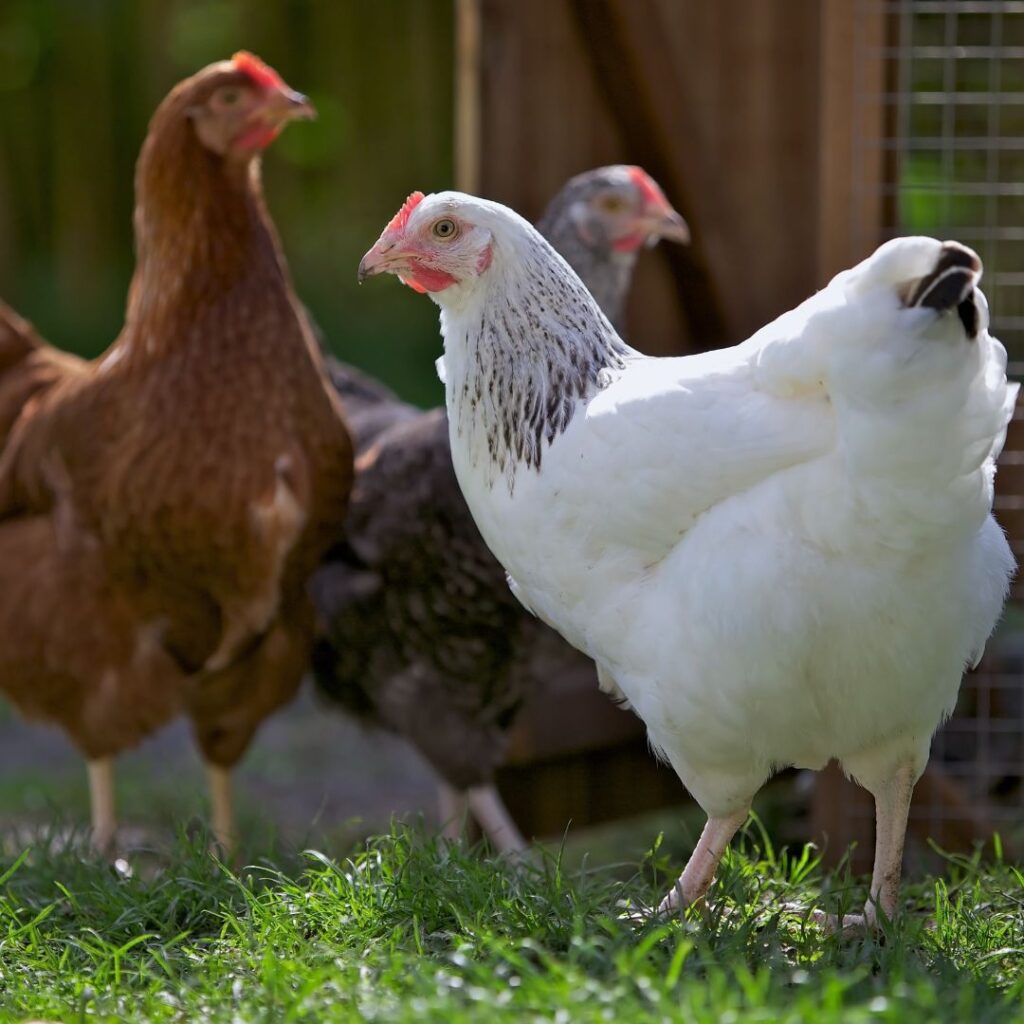
About The Delaware Chicks
Delaware males X New Hampshire or Rhode Island Red females = chicks with the Delaware feather pattern.
Delaware females X New Hampshire or Rhode Island Red males = sex-linked chicks. This results in the males having the Delaware feather pattern and the females having the solid red feathering of the male. These are called Red Sex Links.
Their color can identify the gender of sex-link chicks.
About The Breeds That Make A Delaware chicken Breed
Two primary breeds make a Delaware chicken breed. Taking a brief look into these breeds is a great way to understand how fantastic this bird’s genetics are.
New Hampshire Red
Rhode Island Reds are the only contributing breed to the New Hampshire Red. No other chicken breeds were used in the development of this N.H. breed. They were developed by selectively breeding R.I. reds for fast growth, cold hardiness, and egg and meat production.
(Some breeders will use the Rhode Island Red Rooster for this breeding in place of N.H. Red chicken)
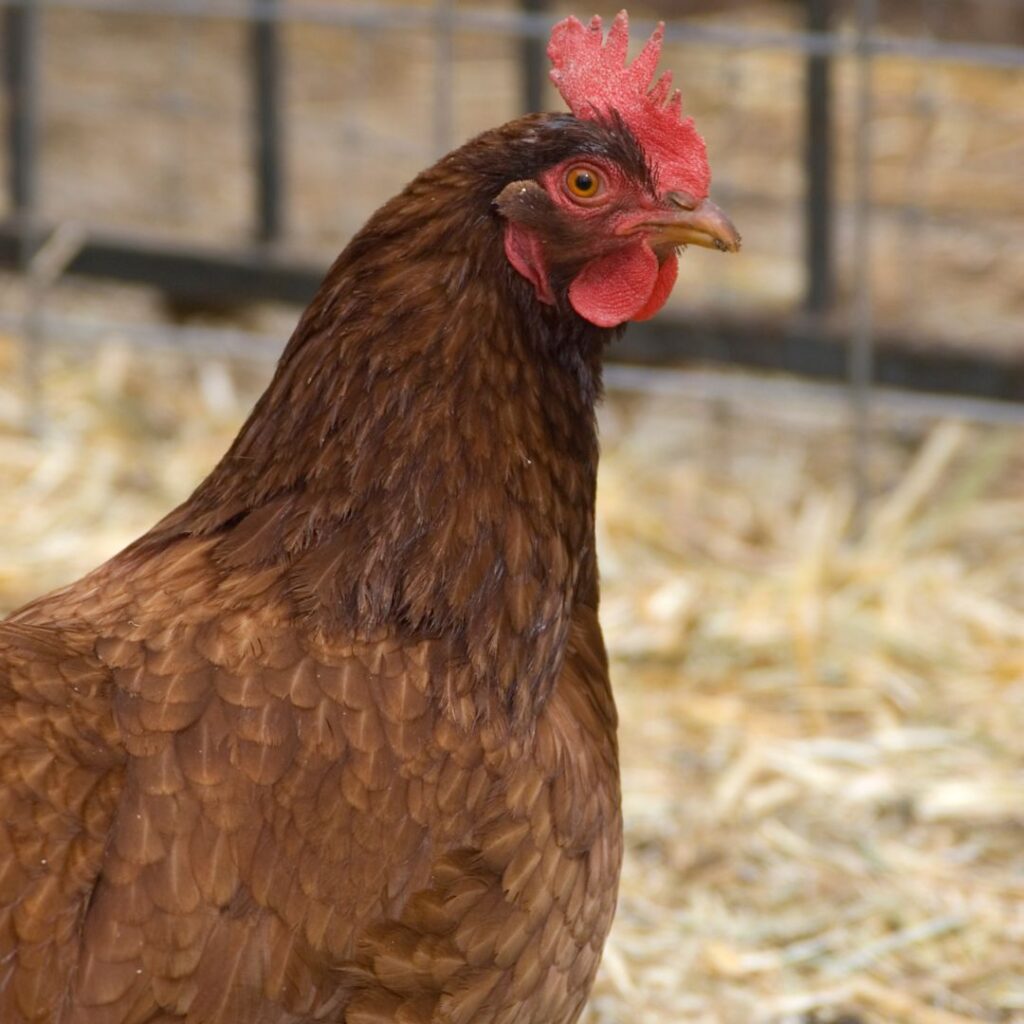
Barred Rock
The original Rocks were used to develop the R.I. Red, N.H. Red and Silver-Laced Wyandotte breeds. Barred Rocks are among the first breeds recognized by the American Poultry Association in the U.S., along with the Dominiques. They are still the most popular dual-purpose chicken breed in the United States. They are bred for their meat and egg production.
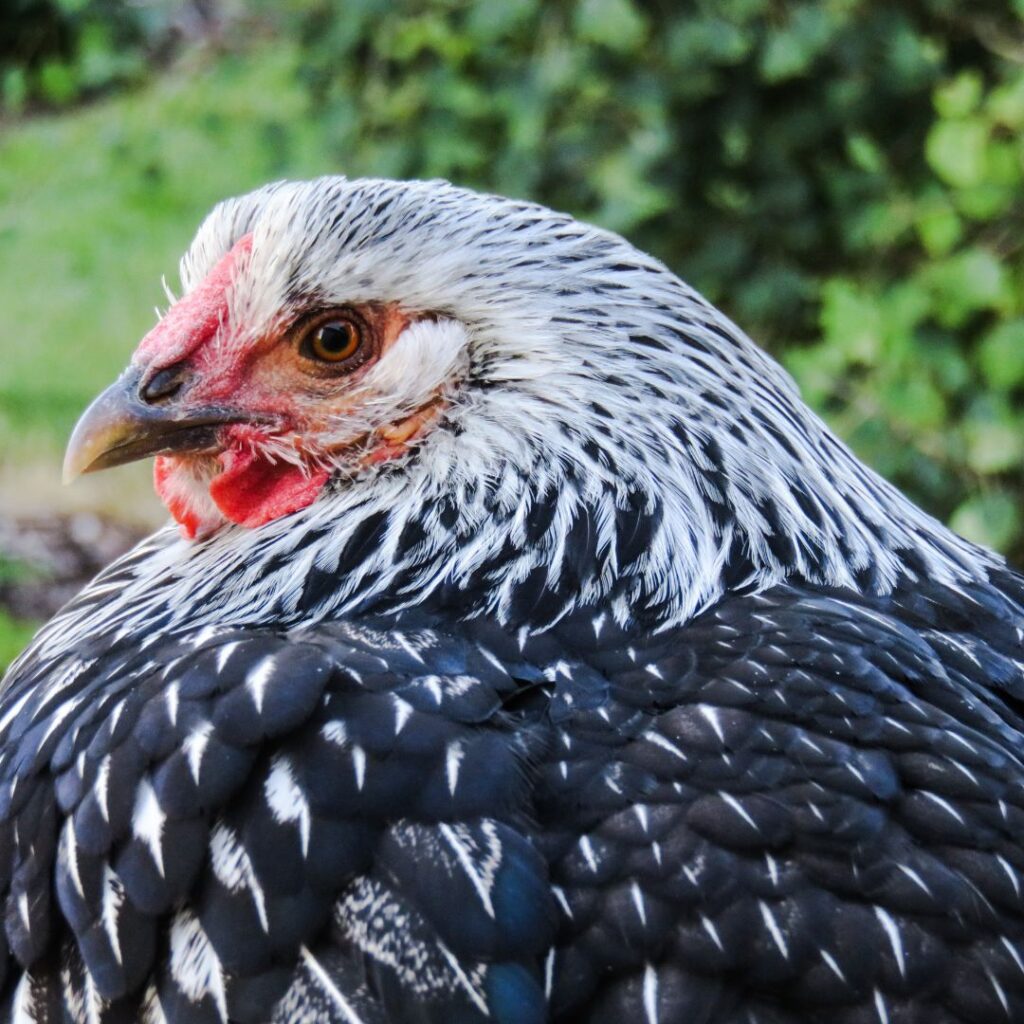

Delaware enhanced heritage broiler
The Delaware Enhanced Heritage Broiler from Murray McMurray Hatchery is an improved version of the beloved dual-purpose breed, boasting more flavor and tenderness. Deliciously juicy and full of mouthwatering flavor – this bird is sure to be a favorite for homesteaders.
The Delaware Broiler is a go-to barnyard favorite that provides more meat than other Heritage breeds while still exhibiting the same high-quality characteristics and lifespan of traditional breeds.
These birds grow at an average rate of slow-growth broilers. For the best results, raise these hens as layers (eggs will start around 18-20 weeks old) and process them when they reach an older age.
Personality Of The Delaware Hens and Roosters
Delaware chickens are known for their curious and independent personalities; overall, they are friendly chickens. They are curious, intelligent animals that chatter and follow their people around the farm. Roosters, in particular, will often be seen exploring the yard, pecking around, and helping with daily tasks such as removing unwanted bugs like grubs and even ticks.
Getting to know them by spending time with them and hand-feeding them treats can present many opportunities for fun encounters.
Delawares are known for taking well to petting and can even learn to become lap chickens.
How Are The Delawares In A Mixed Flock?
This breed does well in mixed flocks with other hens of similar personality types. Even though their lines can include the N.H. and Rhode Island Reds, the better’ parent’ breed to mix with is other breeds that are docile-natured birds like the Plymouth Barred Rocks. Delawares fall lower in the pecking order.
Is The Delaware Rooster Aggressive?
In general, the Delaware Rooster is similar in personality to the hens. They’re docile, curious, and friendly.
However, even though they’re lower in the pecking order, roosters have been known to protect their flock, not the aggressor. They are not bullies, therefore don’t go looking for trouble.
Like any chicken, if not given adequate space and places to explore, they will get bored, and aggression can creep in to release their excess energy.

Is The Delaware Chicken Noisy?
The Delaware Chicken has a reputation for being quite noisy. They can be quite the chatterboxes, so it’s best to think twice about getting these birds if you have close neighbors.
Thankfully, their volume reaches manageable levels.
Dual Purpose Chicken Breed; Delaware Chickens And Their Many Benefits
These birds were bred for people raising chickens for both meat and egg production. While the introduction of the cornish crossbreeds is a tasty option for meat production, they’re not bred to be egg layers. Your best alternative to have the best of both in a bird is to go with the Delaware chicken breed.
How fast do Delaware chickens mature?
Delaware meat production birds reach harvestable weights between 3-4 months of age, though showier lines may take longer. The hens mature earlier than many breeds and can start laying eggs around 20 weeks old. However, depending on when your chicks hatched, egg production may be delayed if they hatched towards the end of the year when daylight hours are at a minimum. In this case, artificial lighting may be necessary to induce early egg-laying.
Therefore, don’t be shocked if you purchased your chicks in July or August and you don’t see eggs until next spring. (unless, of course, you use artificial lighting)
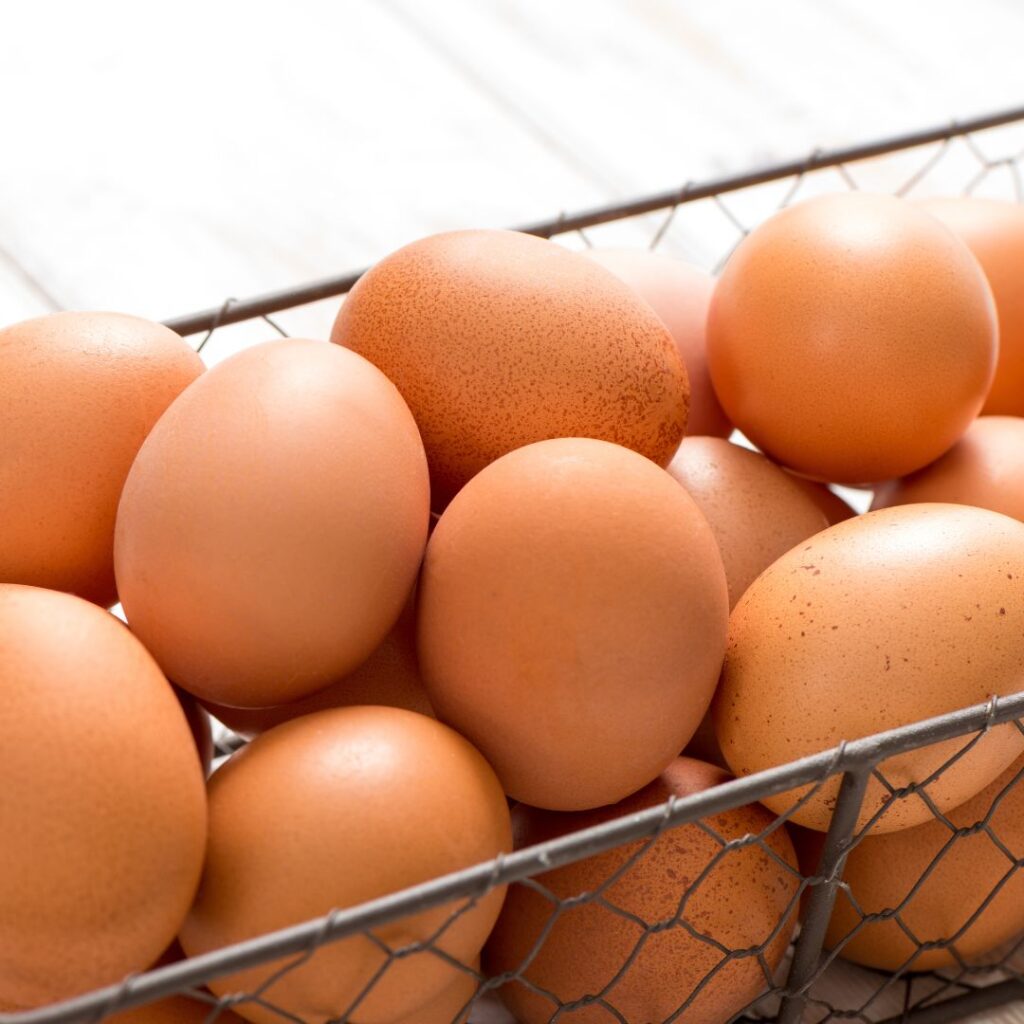
Delaware Hens; Egg Production and more
How Long Do You Have To Wait For Your First Delaware Chicken Eggs?
Egg production typically starts with the Delaware pullets, at around 20 weeks. However, their lines from the N.H. chickens may be strong, and they may mature quickly, meaning you could have an egg-producing hen as early as 16 weeks. Have those nesting boxes ready for plenty of use.
What Color Eggs Do Delaware Chickens Lay?
They lay medium brown color and light brown eggs.
How many eggs per year do Delaware Hens lay?
The Delaware lays an average of 4 -5 eggs per week in a year, that is, 175-250 large brown eggs, with some hens laying eggs that are x-large and even jumbo size. These ladies mean business.
Learn more about how long chickens will lay eggs for in this article.
About The Delaware Chicken As A Meat Bird
They were bred for their great meat because they were dual-purpose hens and meat-production roosters. The white feathers don’t bruise or discolor the skin at butchering either, making it a desirable meal to serve guests. A full sized 8 lbs rooster will be ready around five months. Your dual-purpose hen will weigh approximately 6 pounds at the same age.
Are Delaware Chickens A Low-Maintenance Breed?
These chickens are easy to care for and suitable for beginners, busy families, and hobby farms. Delawares are hardy chickens requiring minimal care. They are not known for inherited diseases or conditions requiring special diets or care.
Delawares require the basics: quality food, clean water, and a safe, secure shelter.
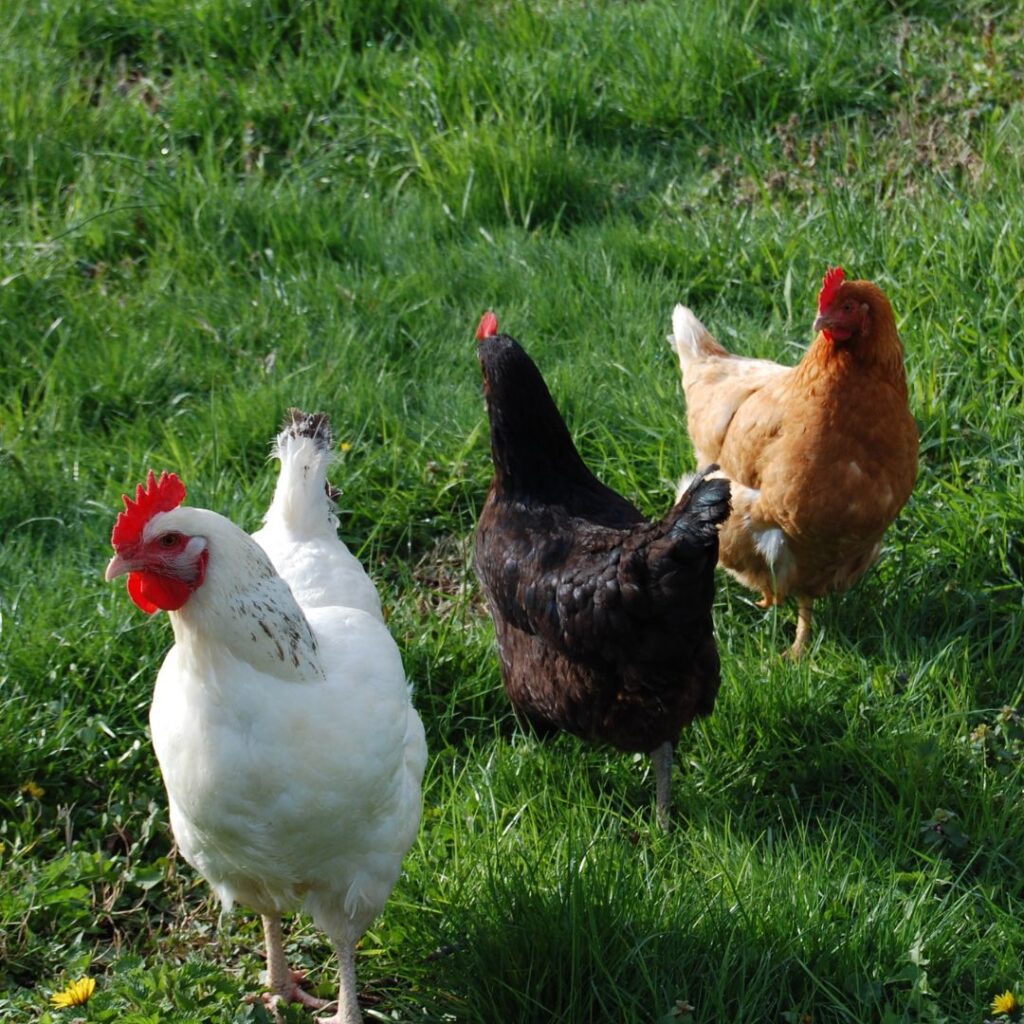
Are Delawares Heat Tolerant? Are Delawares Cold Hardy?
The Delaware chicken is a hearty and hardy breed in hot and cold climates. Delawares can brave temperatures that drop into the teens without harm, thanks to their broad and deep body set. Their bodies can generate enough heat overnight to maintain a thirty to forty-degree temperature within the coop.
In warmer climates, they also thrive, but extra measures such as spraying the top of the coop or run with water or providing them with dust baths may be necessary to help keep them cool.
Avoid spraying the chickens directly with water; spraying the ground or providing fresh grass clippings in the run will help cool their feet.
Other Chicken Breeds That Are Cold Hardy
- Ameraucana
- Australorp
- Brahma
- Buckeye
- Chantecler
- Cochin (Buff Cochin)
- Delaware
- Dominique
- Easter Eggers
- Jersey Giant
- New Hampshire Red
- Olive Egger
- Orpington (Buff)
- Rhode Island Red
- Speckled Sussex
- Silkie
- Welsummer
- White Leghorn
- Read about 18 cold hardy chicken breeds here.
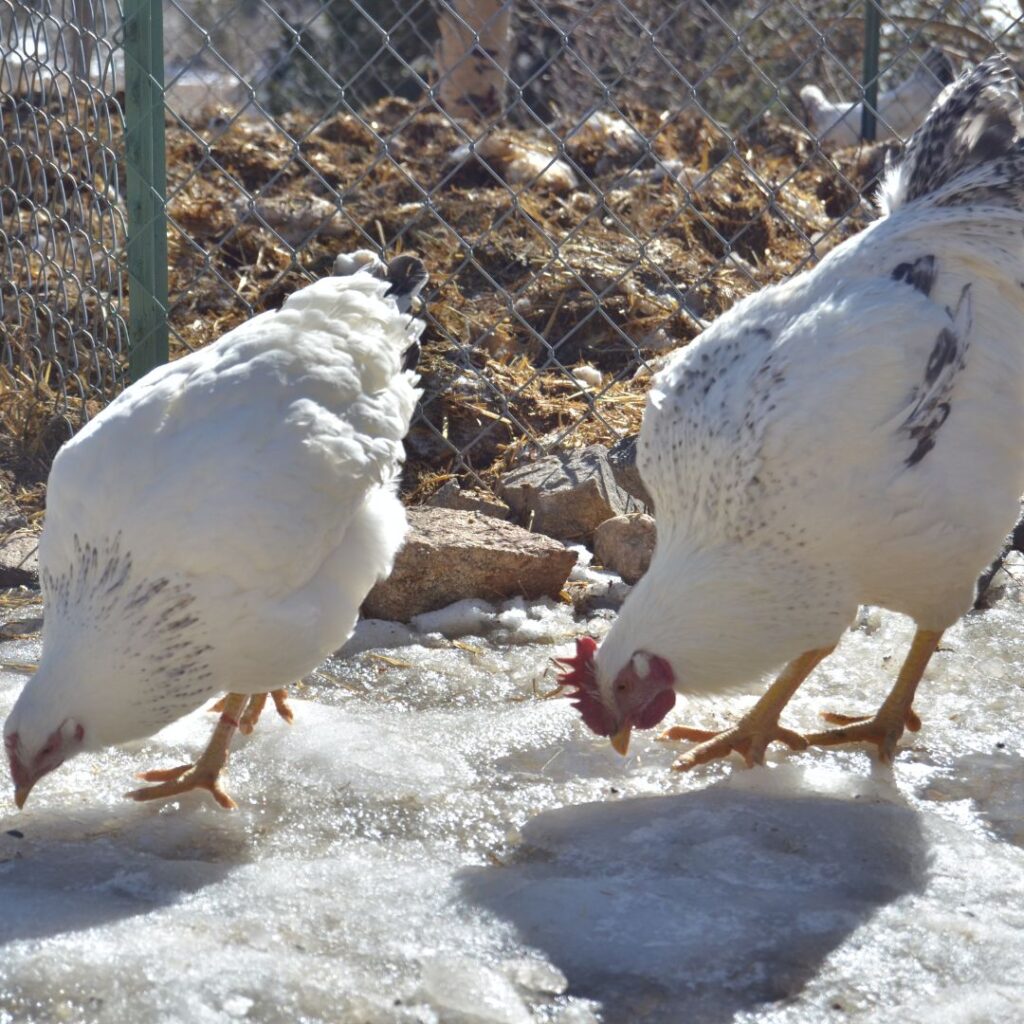
Chicken Coop For A Happy And Healthy Chicken
Space – 8-10 square feet per bird. This is where you’ll fill space with nesting boxes, roosts for resting, and feeders and waterers. If you plan on hatching chicks with a broody hen or incubator, plan for this growth.
Roosts – 12″ of roosting space for each bird is perfect. This is where they’ll sleep and take winter naps. Although you’ll find them using less space in the winter when they huddle closer together for warmth, they’ll spread out again in the summer.
Nesting boxes – The standard 12″ square nesting box is perfect for egg-laying hens and hatching eggs if you want to let your broody hen experience motherhood. A 1:4 ratio is best here, meaning one nesting box should be ready for every four hens. Keep these clean with plenty of extra bedding to protect those fresh eggs.
Feeders and Waterers – Keep these clean and fresh at all times. It helps to elevate them off the ground to keep litter from getting into the water or feeder.
In the winter, change out the water frequently when temperatures will freeze the water. An alternative is to purchase a heated waterer or bowl warmer.
Add ice cubes to the water during the summer to help keep it fresh.
The Chicken Run Space – The outdoor space needs to be a minimum of 10 square feet per bird.
Fencing height – While a four-foot fence may keep the Delaware chicken in, it will not do any good keeping predators out. Provide a six-foot-high secure fence to protect your flock.
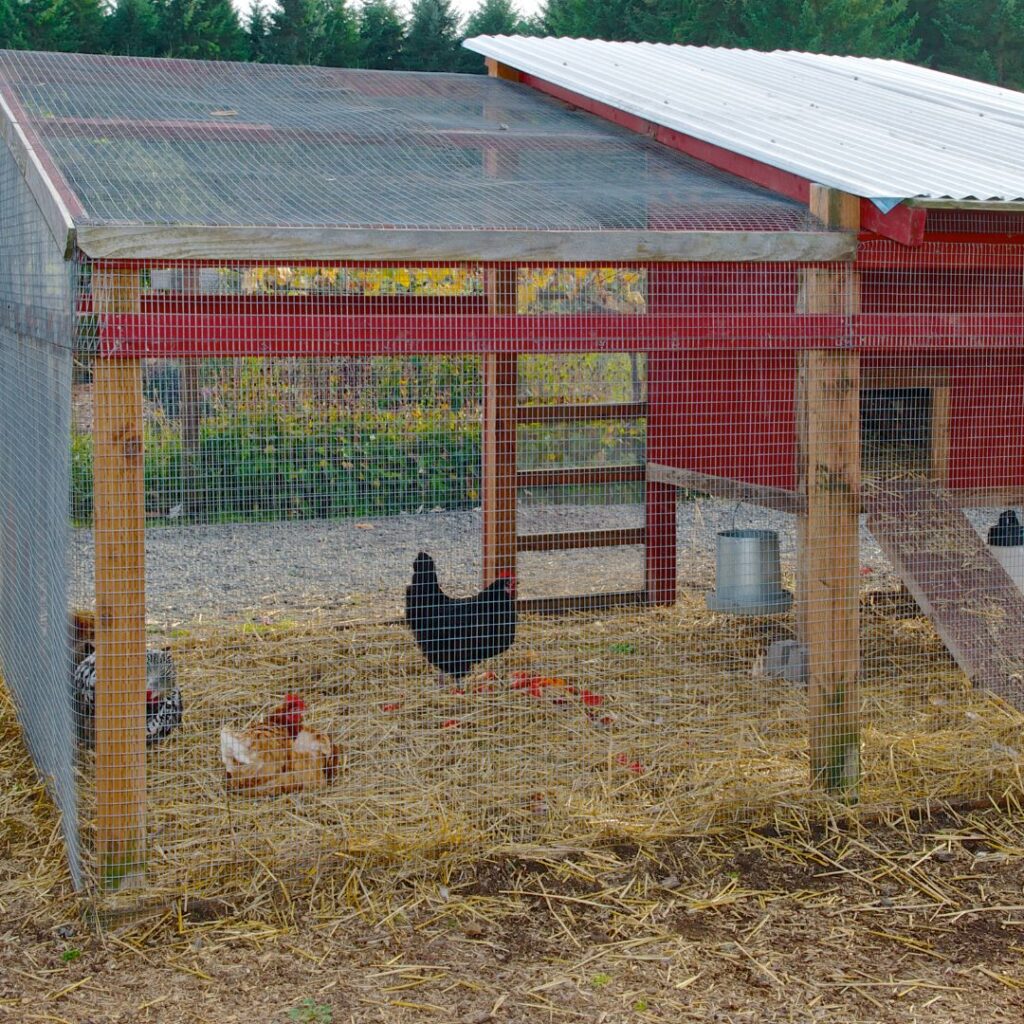
Dust Bath – The dust bath will allow your birds to keep their snowy-looking feathers shiny and beautiful while freeing them from mites and lice.
The dust bath is also an excellent way for chickens (any bird, for that matter) to cool off on a hot day.
Frostbite – The large single combs on the Delaware chicken breeds are prone to frostbite. You can prevent this by smoothing some petroleum jelly on the red wattles every day or two.
How Are Delaware Chickens As A Free Range Flock?
Like other breeds, the Delaware breed enjoys the opportunity to free-range. Their curiosity will have them investigating every corner of your yard and garden when roaming free.
They tend to be predator savvy even when foraging, alerting their flock if danger is nearby. You can take comfort in knowing that no harm will come to them if their environment remains safe.
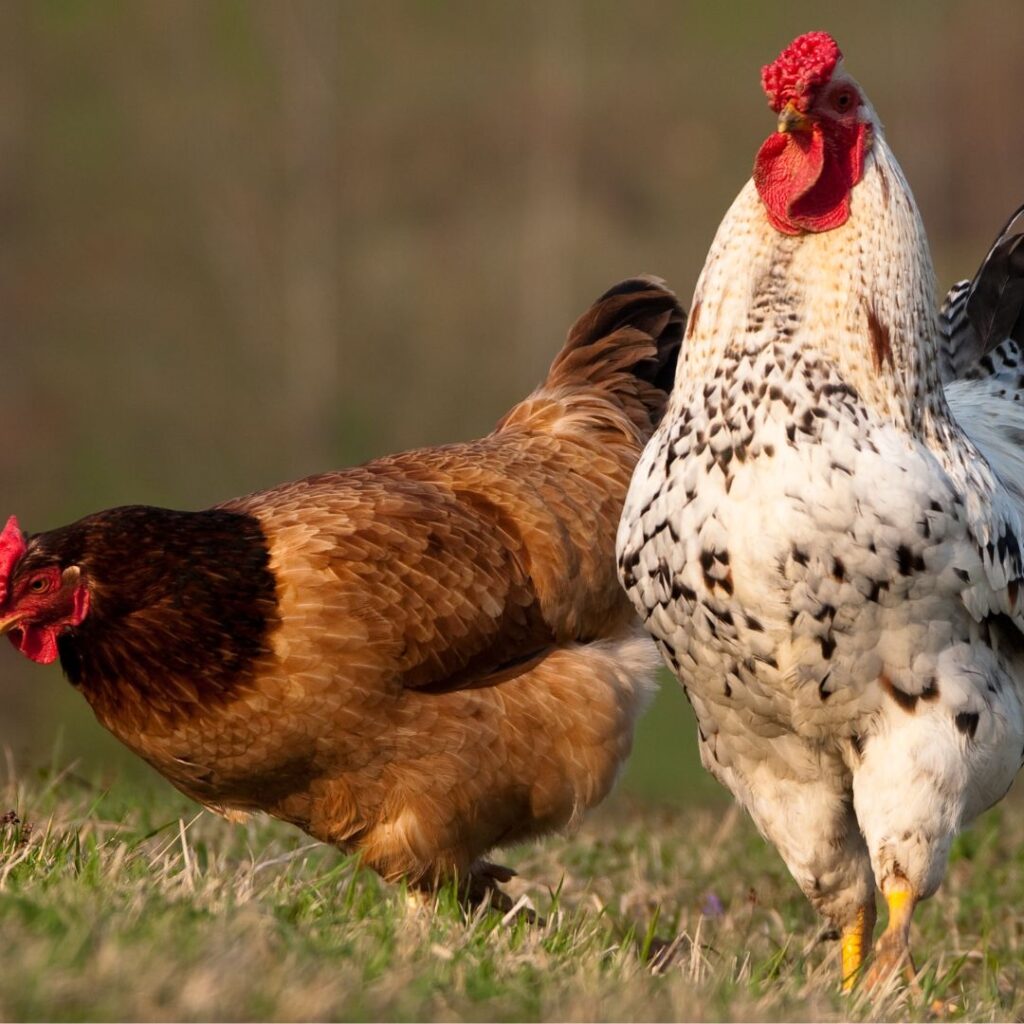
Do Delaware Chickens Make Good Urban Chickens?
While we understand why Urban homesteads would love this Delaware breed in their yard, you’ll be best to look at other chicken breeds.
Delawares are very chatty and can be loud, making them less than ideal-urban neighborhood chicken breeds.
How Is The Delaware Chicken Breed For Hobby Farms Or A Backyard Flock?
Delawares. formerly called Indian Rivers, are worth considering if you’re looking for high productivity from your flock or want some friendly backyard chickens. These hardy birds are known for their good temperaments, good broiler chicken, good laying capabilities, consistent performance throughout the year regardless of seasonal changes, and quality farm fresh large brown eggs.
They have a stunning appearance due to the barring patterns on their feathers, making these chickens quite attractive additions to your flock.
So if you’re looking into getting some chickens, make sure you give Delawares serious consideration; they’ll make excellent additions to small farms and a backyard flock.
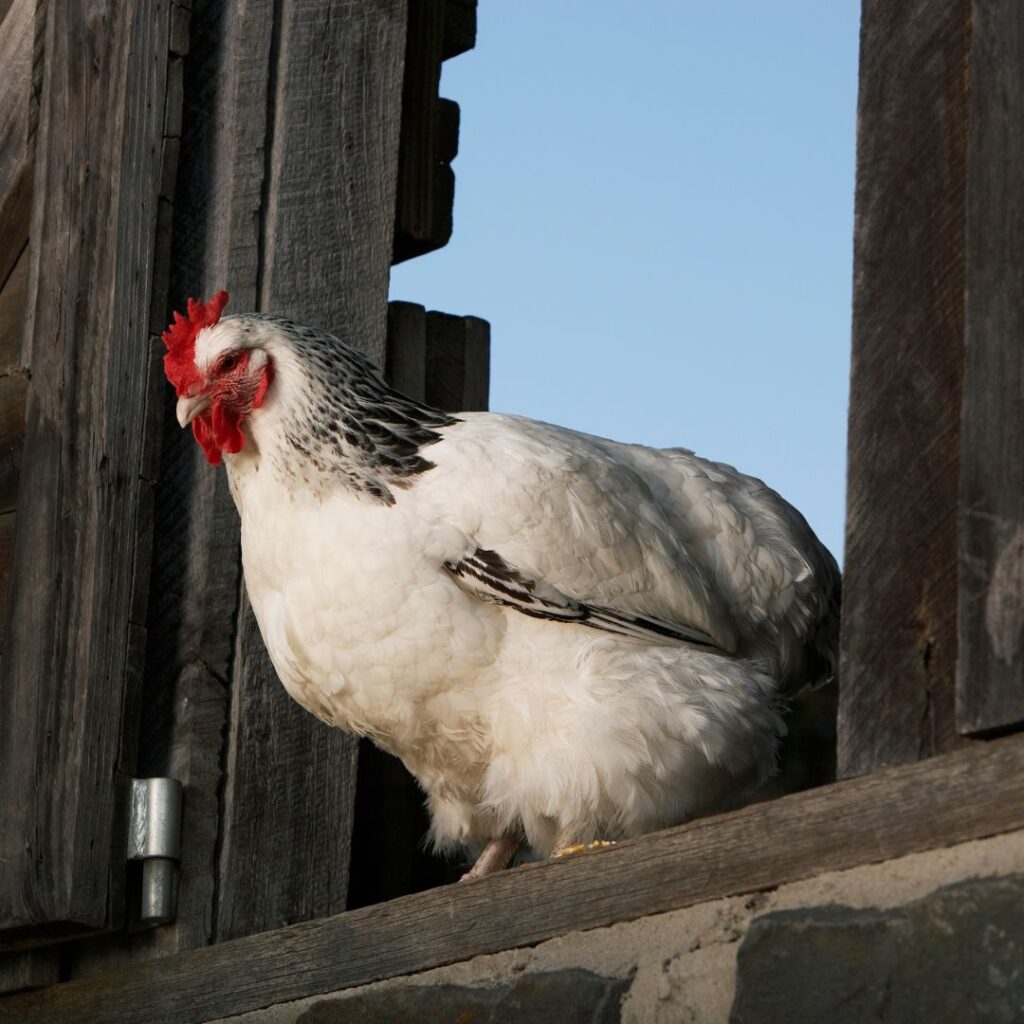
FAQ
Frequently asked questions and Delaware chicken facts – inquiring minds want to know.
Why is Delaware known for chicken?
In an article published by the USDA in 2021, Delaware is home to the two largest broiler industry counties in the U.S. These are Sussex and Kent counties. This was taken from a 2017 Agricultural Census.
Sources: USDA, USDA Census of Agriculture.
What two breeds make a Delaware chicken?
Their parent lines are from the Hampshire Reds and the Barred Rocks.
What is the friendliest kind of chicken?
- Buff Orpingtons
- Lavender Orpingtons
- Australorps
- Ameraucanas
- Barred Plymouth Rocks
- Silkie Bantams
- Faverolles
- Cochins
- Easter Eggers
- Brahma Chickens
- Polish Chickens
- Turken Chickens
Do Delaware chickens breed true?
Delawares are known to breed true, meaning you can reliably anticipate their offspring will resemble their parents in physical and behavioral characteristics.
This is excellent news for those looking for a sustainable flock, as their efforts to preserve the Delaware breed will ensure future generations and maintain its legacy.
Be Sure To Read About Our 15+ Top Egg Laying Hens.
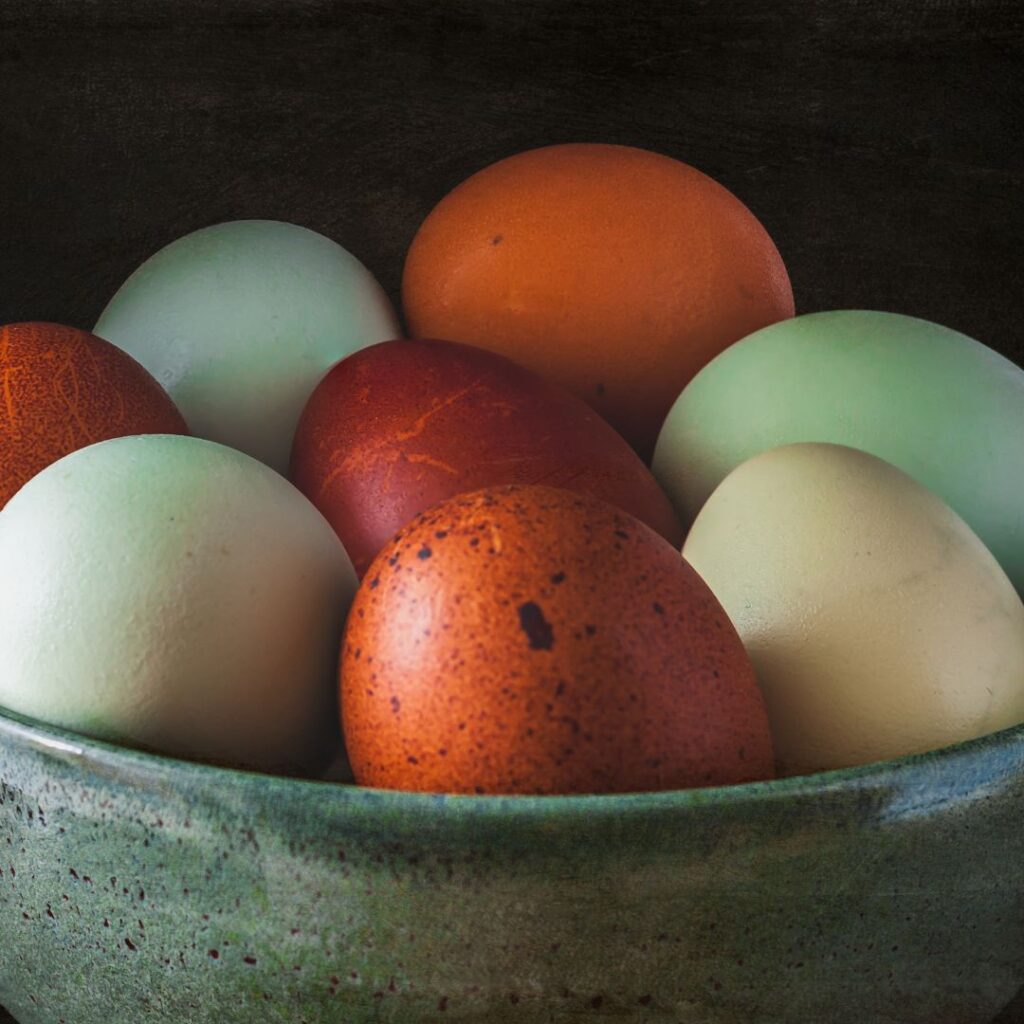


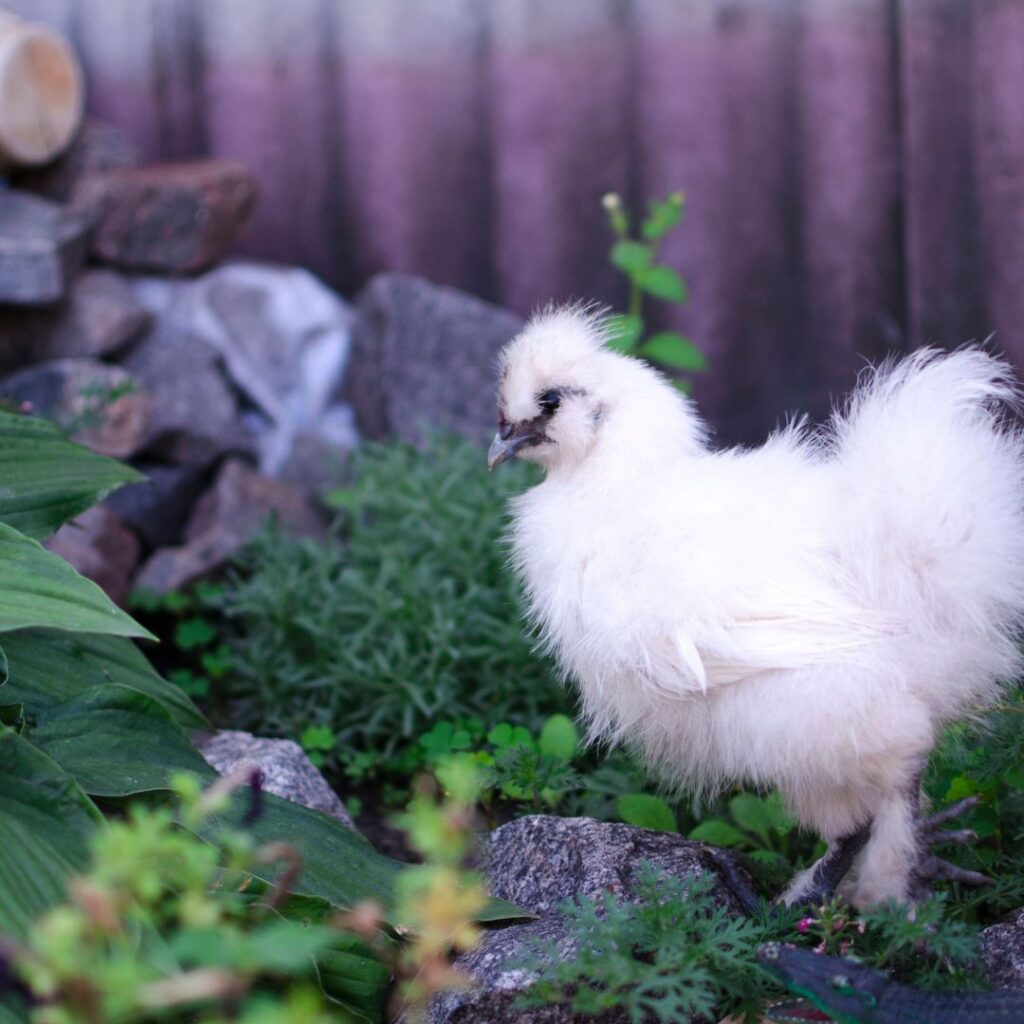
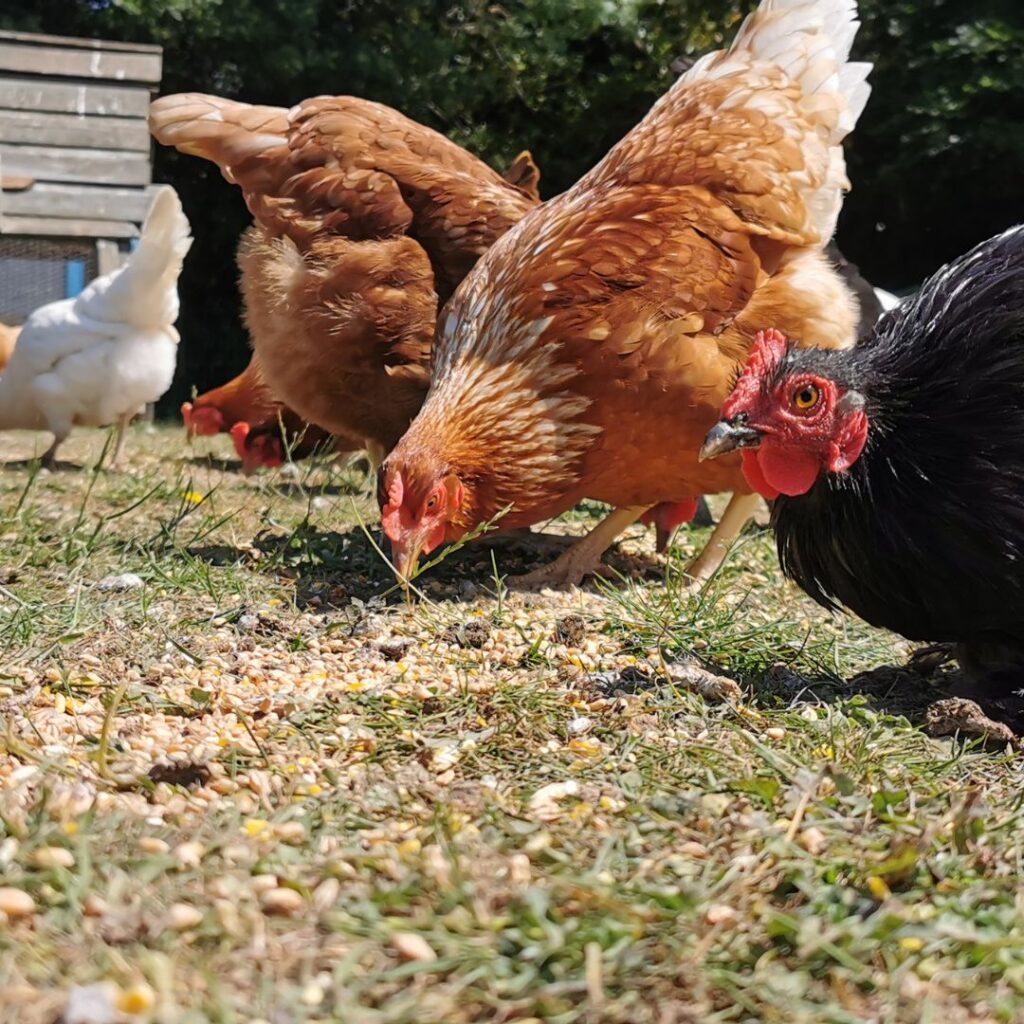

Pingback: Do Chickens Lay Eggs In Winter Months? How To Encourage Egg Laying Year Round